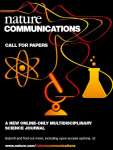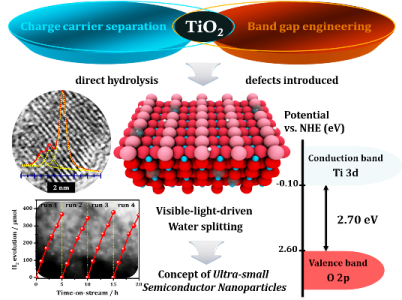

Titanium dioxide is a promising photocatalyst for water splitting, but it suffers from low visible light activity due to its wide band gap. Doping can narrow the band gap of titanium dioxide; however, new charge-carrier recombination centres may be introduced. Here we report the design of sub-10 nm rutile titanium dioxide nanoparticles, with an increased amount of surface/sub-surface defects to overcome the negative effects from bulk defects. Abundant defects can not only shift the top of the valence band of rutile titanium dioxide upwards for band-gap narrowing but also promote charge-carrier separation. The role of titanium(III) is to enhance, rather than initiate, the visible-light-driven water splitting. The sub-10nm rutile nanoparticles exhibit the state-of-the-art activity among titanium dioxide-based semiconductors for visible-light-driven water splitting and the concept of ultra-small nanoparticles with abundant defects may be extended to the design of other robust semiconductor photocatalysts.